Discover 15 hidden attractions, cool sights, and unusual things to do in Huntington (United States). Don't miss out on these must-see attractions: Heritage Farm Museum & Village, Joan C. Edwards Stadium, and Camden Park. Also, be sure to include Huntington Museum of Art in your itinerary.
Below, you can find the list of the most amazing places you should visit in Huntington (West Virginia).
Table of Contents
Heritage Farm Museum & Village
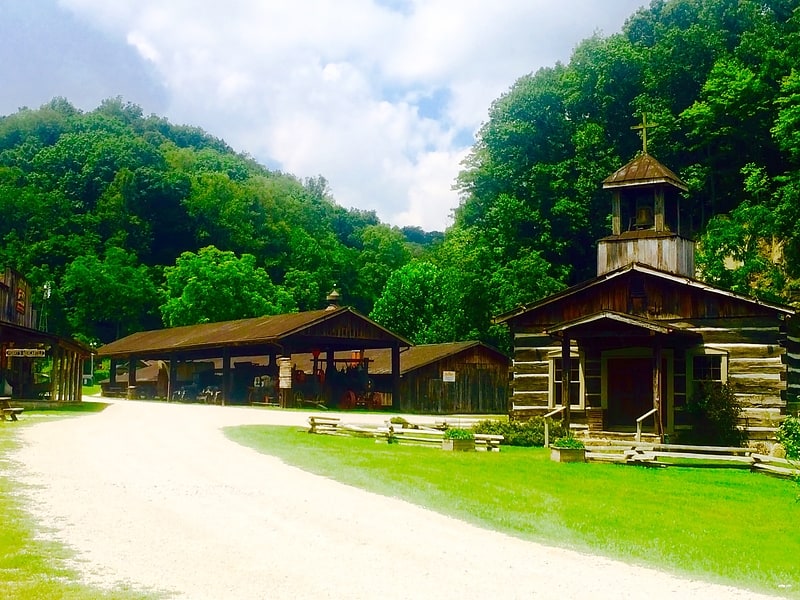
Museum in Wayne County, West Virginia. Heritage Farm Museum and Village is an open-air living history museum in Huntington, West Virginia that focuses on Appalachian history and culture. Originally conceived as a location to house and display the private collection of A. Michael "Mike" and Henriella Perry, Heritage Farm has expanded into an entire Appalachian Frontier Village that was recently named West Virginia's first Smithsonian-affiliated museum.[1]
Address: 3300 Harvey Rd, 25704-9112 Huntington
Joan C. Edwards Stadium
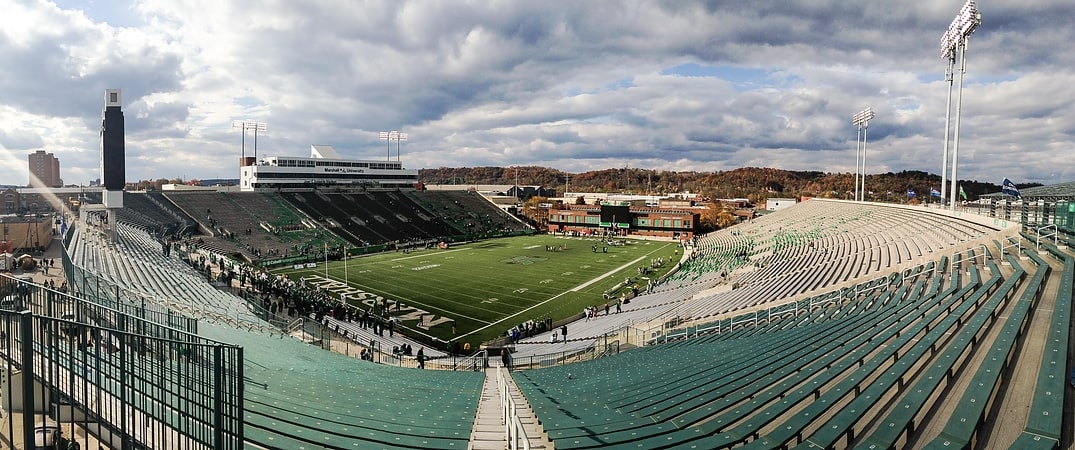
Stadium in Huntington, West Virginia. Joan C. Edwards Stadium, formerly Marshall University Stadium, is a football stadium located on the campus of Marshall University in Huntington, West Virginia, United States. It can hold 38,227 spectators and includes twenty deluxe, indoor suites, 300 wheelchair-accessible seating, a state-of-the-art press-box, 14 concession areas, and 16 separate restrooms. It also features 90,000 sq ft of artificial turf and 1,837 tons of structural steel. It also houses the Shewey Athletic Center, a fieldhouse and a training facility. The new stadium opened in 1991 and replaced Fairfield Stadium, a condemned off-campus facility built in 1927 in the Fairfield Park neighborhood.
Marshall has a 170-37 overall record at Joan C. Edwards Stadium for a winning percentage of.821, one of the top five home winning percentages in the nation.[2]
Address: 2001 3rd Ave, 25703 Huntington (Downtown Huntington)
Camden Park
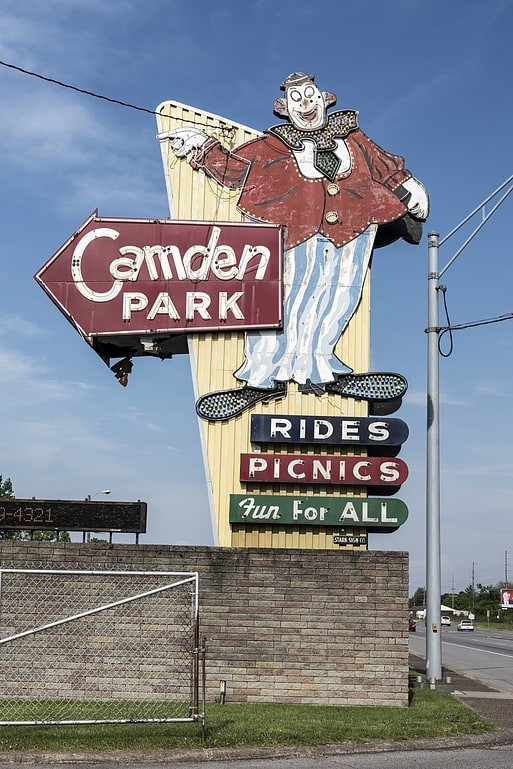
Amusement park in Wayne County, West Virginia. Camden Park is a twenty-six acre amusement park located near Huntington, West Virginia. Established in 1903 as a picnic spot by the Camden Interstate Railway Company, it is one of only thirteen trolley parks that remain open in the United States. Whereas most trolley parks were located at the end of trolley lines, Camden Park is unusual in that it was built where riders traveling between Huntington and nearby cities would stop to change lines. Not long after opening, the park soon gained a carousel and other roadside attractions. Camden Park is West Virginia's only amusement park. The park is home to more than thirty rides and attractions, including a full-size traditional wooden roller coaster, the Big Dipper, and several other vintage rides.
Over the years, Camden Park has featured a swimming pool, a roller rink, and even a small zoo. Today, the park hosts a variety of events throughout the year, including live musical performances as part of the "Hot Summer Nights" concert series. Other events include the "Children's Festival," "Coca-Cola Days," and the "Halloween Spooktacular." The park is typically open six days a week from late May to early August, with a more limited schedule in late August, and select dates in September and October.[3]
Address: 5000 Waverly Rd, 25704-1000 Huntington
Huntington Museum of Art
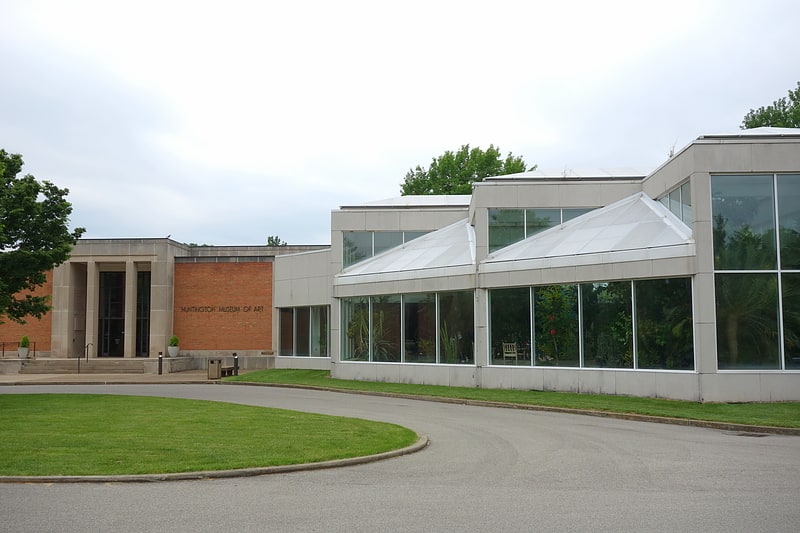
Museum in Huntington, West Virginia. The Huntington Museum of Art is a nationally accredited art museum located in the Park Hills neighborhood above Ritter Park in Huntington, West Virginia. Housed on over 50 acres of land and occupying almost 60,000 square feet, it is the largest art museum in the state of West Virginia. The museum's campus is home to nature trails and the C. Fred Edwards Conservatory, a subtropical and tropical plant conservatory. The museum's collection includes American and European paintings, sculptures, prints, and drawings, as well as glass pieces manufactured in West Virginia and the Ohio Valley, American folk art, Chinese and Japanese decorative objects, Haitian art, firearms, and decorative arts from the Near East. In addition to its permanent collections, the museum hosts traveling exhibitions and houses the James D. Francis Art Research Library, the Grace Rardin Doherty Auditorium, and five art studios where artists in residence are periodically hosted and classes are held. The Huntington Museum of Art holds one of the largest collections of art in the state of West Virginia.[4]
Address: 2033 McCoy Rd, 25701-4999 Huntington
East Huntington Bridge

Cable-stayed bridge in Huntington, West Virginia. The East Huntington Bridge is a 900-foot cable-stayed bridge crossing the Ohio River at Huntington, West Virginia. It carries West Virginia Route 106 on the West Virginia approach and OH 775 on the Ohio approach.
The northern approach (from Ohio State Route 7) is the recently extended Ohio State Route 775; its southern terminus is a pair of ramps (northbound on-ramp from Fifth Avenue, southbound offramp to Third Avenue) connecting it to U.S. Route 60.[5]
Keith-Albee Theatre
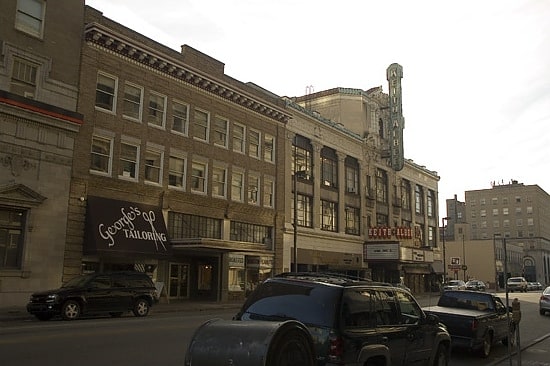
Theatre in Huntington, West Virginia. Keith-Albee Theatre is a performing arts center located along Fourth Avenue in downtown Huntington, West Virginia in the United States of America. The Keith-Albee was named after the Keith-Albee-Orpheum Corporation, one of the leading vaudeville performance chains at that time, to convince the directors of Keith-Albee-Orpheum to make the Keith-Albee a regular stop. At the time of its construction, The Keith Albee was the second largest theater in the U.S. It is listed on the National Register of Historic Places as part of the Downtown Huntington Historic District, and is currently being restored as a performing arts center.[6]
Address: 925 4th Ave, 25701-1408 Huntington (Downtown Huntington)
Museum of Radio and Technology
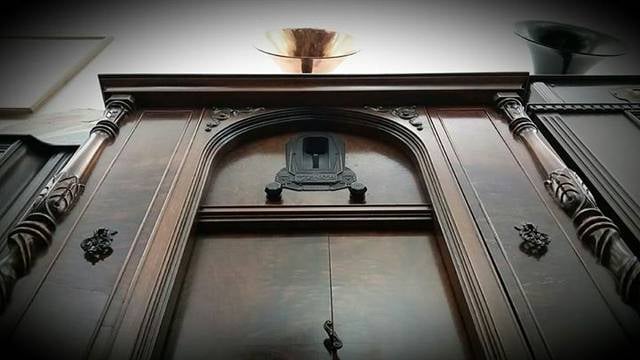
Museum in Huntington, West Virginia. The Museum of Radio and Technology is a museum in Huntington, West Virginia.
The museum covers the birth and growth of electronic communication and entertainment, and includes hands-on exhibits. Admission is free.[7]
Address: 1640 Florence Ave, 25701-4546 Huntington
Cabell County Courthouse

Courthouse. The Cabell County Courthouse in Huntington, West Virginia was built in the Beaux-Arts Classical style in 1899. Originally designed by Gunn and Curtis of Kansas City, and has been expanded in several phases. The construction of the courthouse was supervised by local Huntington architect James B. Stewart.[8]
Robert C. Byrd Bridge

Continuous truss bridge in Huntington, West Virginia. The Robert C. Byrd Bridge is a 720-foot continuous truss bridge that crosses the Ohio River between Huntington, West Virginia and Chesapeake, Ohio. The crossing was constructed to replace an old, narrow, two-lane structure that was demolished after 69 years of service in a spectacular implosion on July 17, 1995. The previous bridge, opened in 1926, was Huntington's first bridge across the Ohio River and was designed in a gothic style, complete with four two-ton spires that rested on top of each peak.
The groundbreaking ceremony for the four-lane bridge was held on April 30, 1991. James Watkins, of the Ohio Department of Transportation, stated that the importance of the new four-lane span would only be heightened by the construction of the Chesapeake-Proctorville State Route 7 bypass that would "begin in 1996." Work on the bypass did not begin until 2000.
The old 6th Street Bridge closed in the summer of 1993 to allow for the construction of the ramps and approaches in West Virginia and Ohio. The new bridge was named the Robert C. Byrd Bridge under an executive order from former Governor Gaston Caperton to honor the U.S. senator from West Virginia, who is credited with obtaining the funding for the project that was completed on November 6, 1994. The $32.6 million bridge was constructed with $1.4 coming from Ohio, $5.6 coming from West Virginia, and $25.3 in federal funds.
The famous spires which once adorned the top of the former span were saved. One is currently on display outside of the Chesapeake city hall at the intersection of State Route 7 and the Robert C. Byrd Bridge. Two others are installed along 9th Street between 3rd and 5th Avenues.[9]
Marshall University

Building in Huntington, West Virginia. Old Main is a collection of five buildings joined together at central campus of Marshall University in Huntington, West Virginia. It is located at the junction of Hal Greer Boulevard and Fourth Avenue. The original structure was completed in 1868, with four other additions that was completed at various intervals until 1907. It is a landmark structure on campus, its towers becoming a "symbol of the university."[10]
Address: 1 John Marshall Dr, Huntington (Downtown Huntington)
B'nai Sholom Congregation
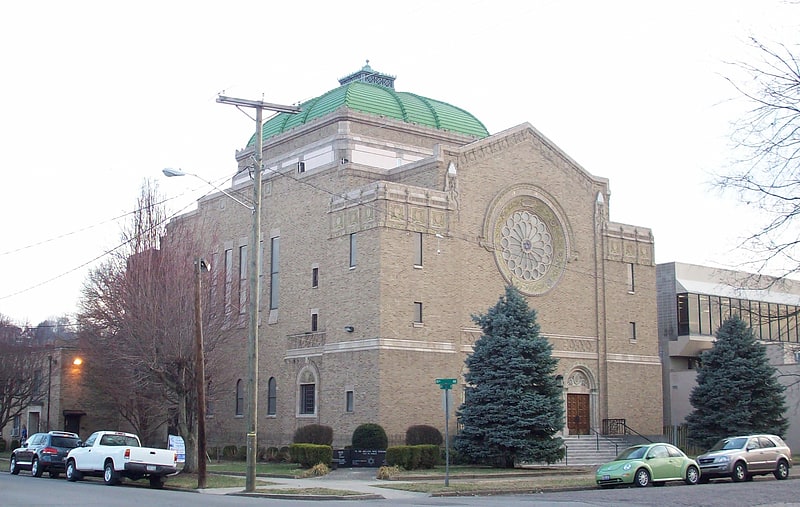
Synagogue in Huntington, West Virginia. Ohev Sholom Temple, now known as B'Nai Sholom Congregation, is a historic synagogue located at 949 10th Avenue in Huntington, Cabell County, West Virginia. Designed by the Charleston, West Virginia architectural firm of Meanor and Handloser, it was built in 1925 for Congregation Ohev Shalom, which had been formed in 1887. In 1978 B'Nai Sholom Congregation was formed by the merger of Ohev Shalom and B’nai Israel, an Orthodox synagogue which had been formed in 1910. On March 17, 1994, the building was added to the National Register of Historic Places. B'Nai Sholom continues today as an active congregation affiliated with both the Reform and Conservative streams of Judaism.[11]
Address: 949 10th Ave, Huntington
Pullman Square

Shopping center in Huntington, West Virginia. Pullman Square is a lifestyle center in downtown Huntington, West Virginia, United States between 8th and 10th Street and 3rd Avenue and Veteran's Memorial Boulevard. It is located on what was known as the Superblock, a large urban renewal project that saw the demolishing of four city-square-blocks in 1970. The center opened in 2004, featuring approximately 20 stores, along with office space, restaurants, and a movie theater. It was developed by Metropolitan Partners.[12]
Address: Huntington, 220 9th Street
Rotary Park Bridge
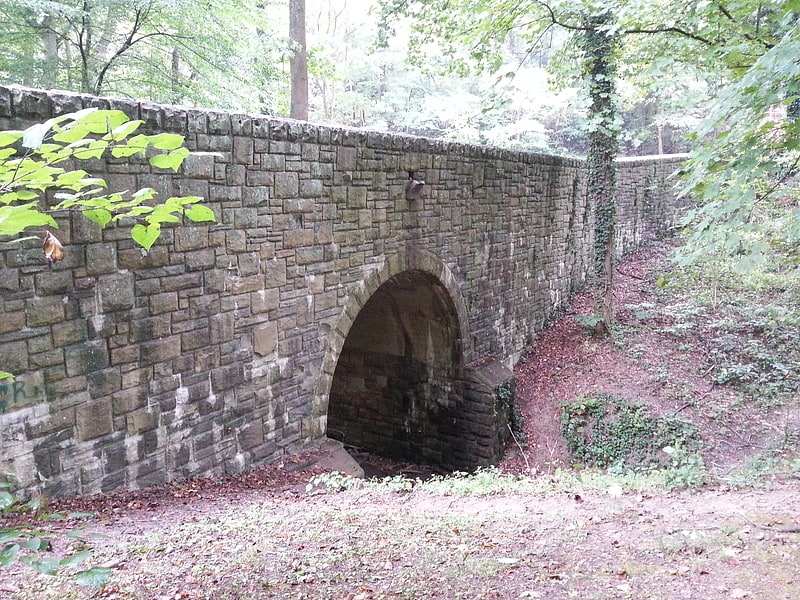
Arch bridge in Huntington, West Virginia. Rotary Park Bridge is a historic arch bridge located in Rotary Park at Huntington, Cabell County, West Virginia, United States. It was built in 1929-1930 and is constructed of native rock-faced, square-cut ashlar in a rustic style. It is approximately 175 feet long and 30 feet wide.
It was listed on the National Register of Historic Places in 2002.[13]
Thomas Carroll House
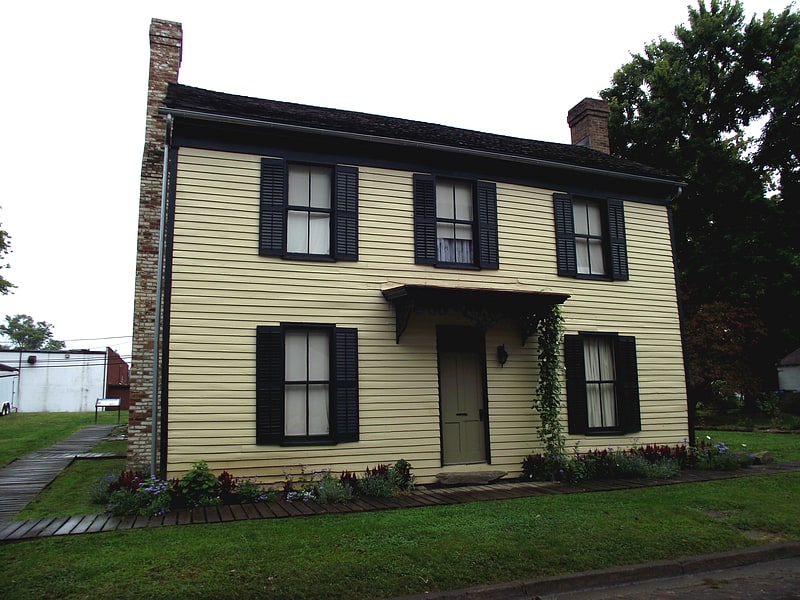
Museum in Huntington, West Virginia. The Thomas Carroll House, also known as the Madie Carroll House, is an historic home located in the Guyandotte neighborhood in the city of Huntington, Cabell County, West Virginia. It is also known as one of the oldest structures in Cabell County. The original section of the house was built prior to 1810, and is believed to have arrived in Guyandotte by flatboat from Gallipolis, Ohio. The property was purchased by Thomas Carroll in March 1855 and remained under the ownership of his descendants until it was deeded to the Greater Huntington Parks and Recreation District on October 10, 1984, after the last tenant, Miss Madie Carroll's demise. It is one of the few houses in Guyandotte to survive the Civil War and even once was a church, an inn, and a home to many. During the Civil War the house was a safe haven for Union soldiers which is a rich history that the Madie Carroll House Preservation Society has spent the last few decades protecting and educating many on. As of today the house is owned and operated by the Madie Carroll House Preservation Society where they hold several events such as their annual Guyandotte Civil War Days. It is open to the public as a museum. It was listed on the National Register of Historic Places in 1973.[14]
Memorial Arch

Cemetery in Huntington, West Virginia. The Memorial Arch is a historic memorial arch located in Memorial Park at Huntington, Cabell County, West Virginia. It was built between 1924 and 1929 by the Cabell County War Memorial Association as a memorial to the dead and to those who served the county in World War I. It is built of gray Indiana limestone on a gray granite base. It measures 42 feet high, 34 feet wide, and 9 feet deep. It features Classical Revival style bas-relief carvings. The structure was rededicated in 1980. It is the only triumphal style arch in West Virginia.
It was listed on the National Register of Historic Places in 1981.[15]